Do You Know What Damaged and Unsafe Rigging Equipment Looks Like?
While the information in the ASME B30 Safety Standards is invaluable—especially when it comes to inspection frequencies and removal from service criteria—we often hear that there aren’t enough examples to show end-users real damage to equipment that warrants removal from service.
If you work in a job that uses lifting and rigging equipment, then you should be familiar with the OSHA and ASME standards that govern the safe use, design, and inspection of that equipment. Regular inspection of your rigging equipment will help to identify dangerous devices before they cause an accident or near-miss on a job site.
Some of the most commonly referenced safety standards for lifting and rigging equipment are:
- OSHA 1910.184 – Slings
- ASME B30.9 – Slings
- ASME B30.26 – Rigging Hardware
- ASME B30.10 – Hooks
- ASME B30.20 – Below-the-Hook Lifting Devices
While the information in these safety standards is invaluable—especially when it comes to inspection frequencies and removal from service criteria—we often hear that there aren’t enough examples to show end-users real damage to equipment that warrants removal from service.
When a Mazzella Rigging Inspector or Lifting Specialist goes on-site for an inspection or consultation, they sometimes encounter misused, damaged, or downright dangerous equipment that’s still in service and being used for overhead lifts.
In this article, we’ll share several real examples of slings, rigging hardware, and homemade lifting devices that our inspectors have removed during an inspection. We’ll walk you through the reasons each device should be removed from service and identify the applicable industry standards for each device.
Sling Hook
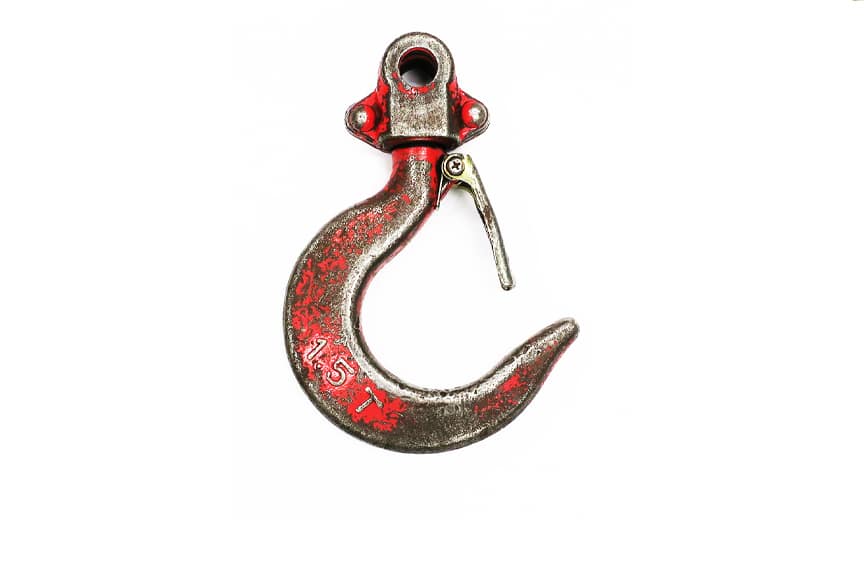
Why should this device be removed from service?
At first glance, it’s clear that this hook is deformed. The damage to this hook was most likely caused by tip-loading, or overloading the hook, which stretched the throat opening beyond its original shape.
Additionally, due to this deformation, the hook latch no longer reaches the tip of the hook to prevent slings or loads from accidentally slipping off the hook.
Relevant Standard(s):
Synthetic Web Sling
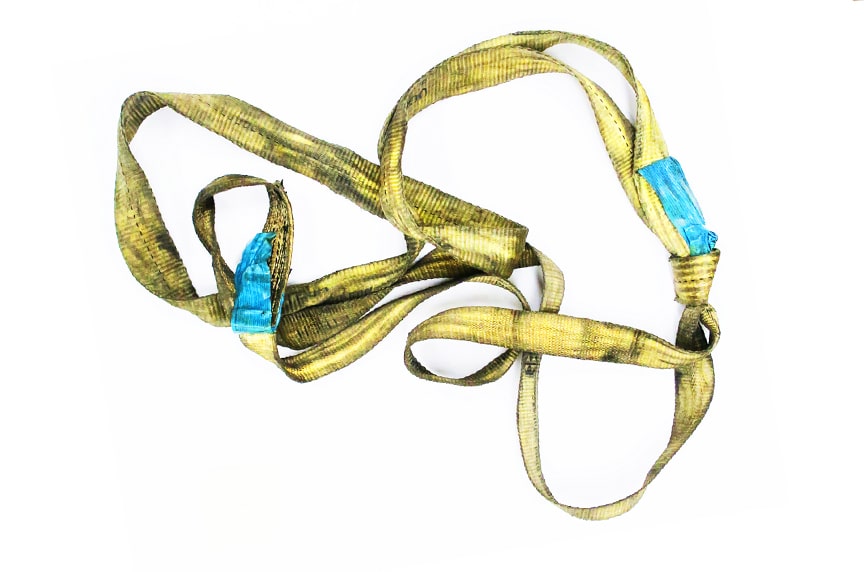
Why should this device be removed from service?
This web sling is non-compliant for several reasons. First, slings cannot be used for overhead lifting with any knots present in the body of the sling.
Second, the sling tag is not legible. If the sling tag is missing or illegible, the sling must be removed from service.
Relevant Standard(s):
Non-Standard Lifting Hook
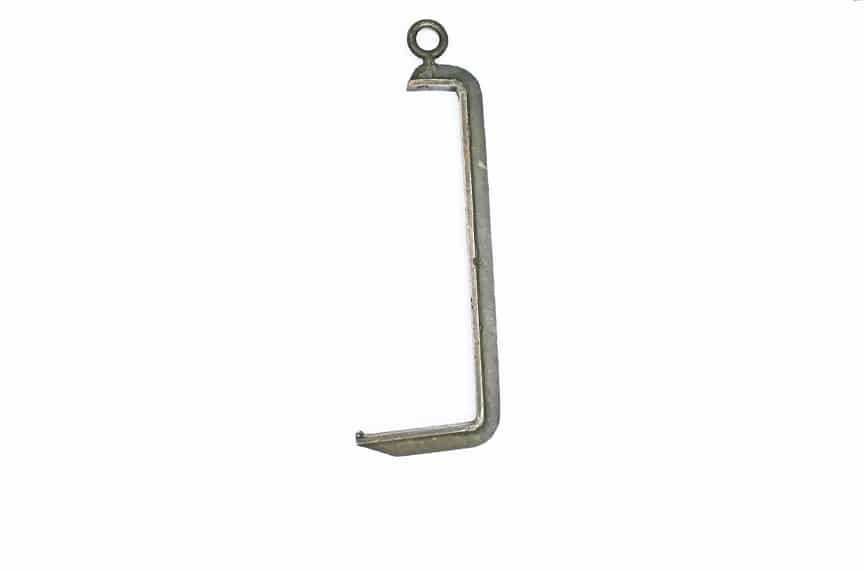
Why should this device be removed from service?
This lifting hook is homemade and modified by welding an eye bolt to the top of what resembles a c-hook device. Per the requirements of ASME B30.20 – Below-the-Hook Lifting Devices, the device appears to be lacking identification that show the serial number, manufacturer, load rating, and other vital design information on it.
Without any visible identification or markings, there’s no way to know what capacity this device is capable of lifting, and is not compliant for overhead lifting applications.
Relevant Standard(s):
ASME B30.20 – Below-the-Hook Lifting Devices
ASME BTH-1 – Design of Below-the-Hook Lifting Devices
Non-Standard Cylinder Lifting Device
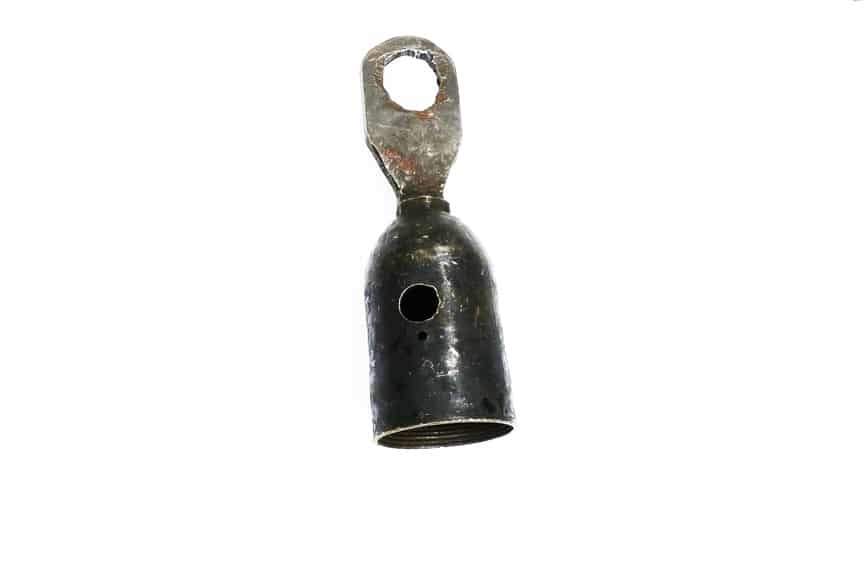
Why should this device be removed from service?
This is a makeshift device comprised of an eye welded to a cap and was used to lift large steel cylinders. The cap is not rated for lifting purposes and the device is welded together and homemade.
Per ASME B30.20 – Below-the-Hook Lifting Devices, the device appears to be lacking identification that shows the serial number, manufacturer, load rating, and other markings on it. Without the proper markings and identification, there is no way to know at what capacity this device is capable of safely lifting.
Relevant Standard(s):
ASME B30.20 – Below-the-Hook Lifting Devices
ASME BTH-1 Design of Below-the-Hook Lifting Devices
Foundry Hook
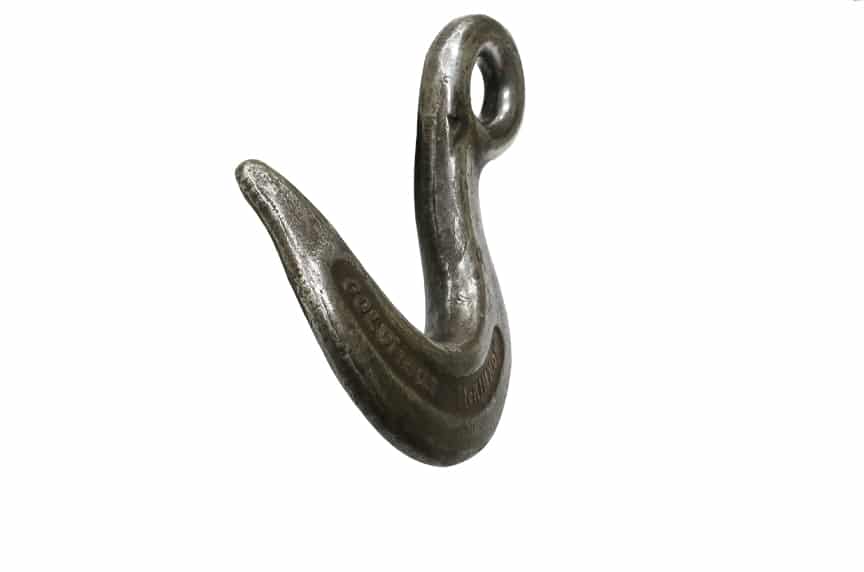
Why should this device be removed from service?
While a foundry hook is a type of lifting hook designed to be used without a latch, this hook has been deformed by overloading or side-loading. There is an apparent twist in the hook as well as a slight stretch in the throat opening. Both instances of deformation warrant removal from service.
Relevant Standard(s):
ASME B30.10 – Hooks
Modified Eye Bolt
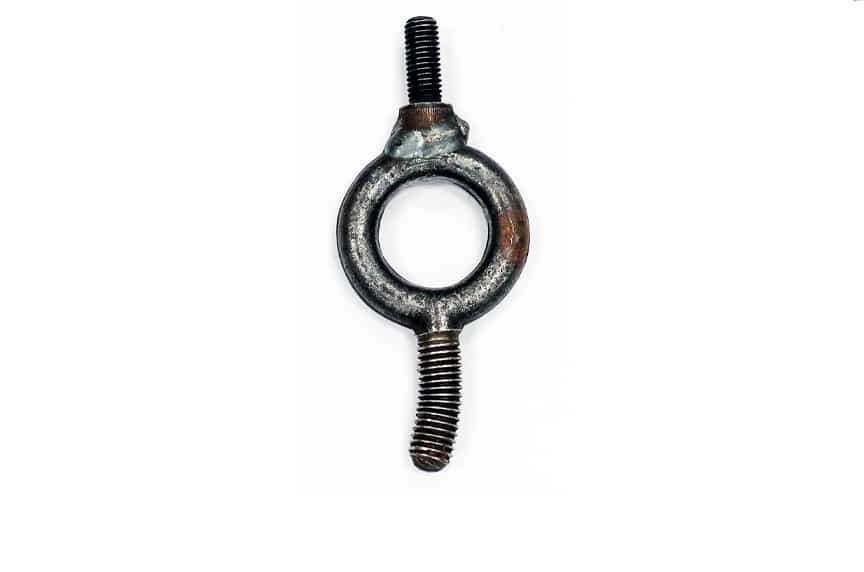
Why should this device be removed from service?
This eye bolt has been modified with a screw welded to the top of the eye. Not only is this device non-compliant because it’s been modified, the shank of the original eye bolt is bent. Both the modification and deformation of the eye bolt warrant removal from service.
Relevant Standard(s):
ASME B30.26 – Rigging Hardware
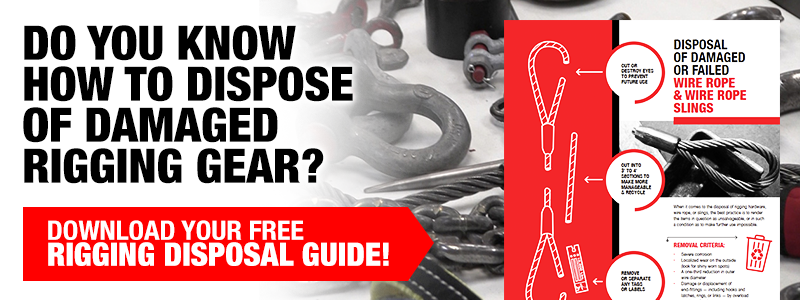
Synthetic Sling Shackle
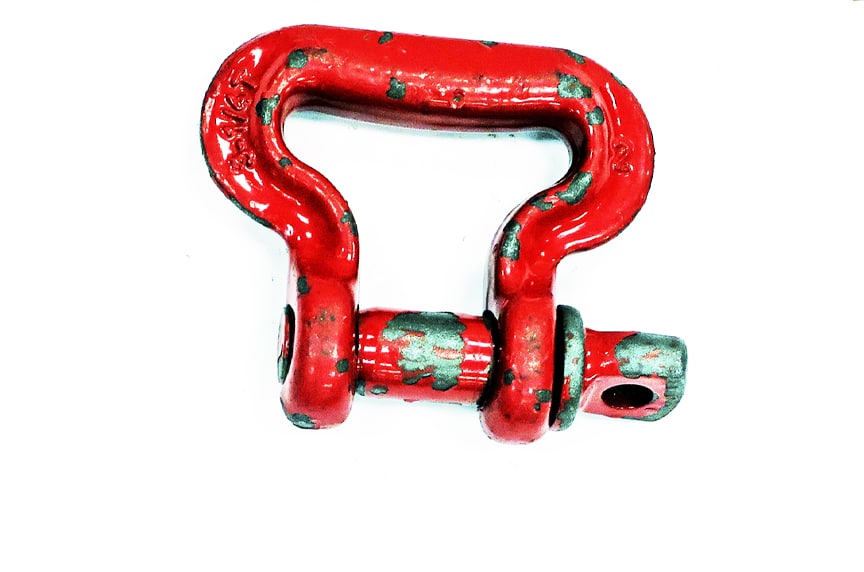
Why should this device be removed from service?
Although this shackle is a little beat up and has some paint chips missing, it’s in overall good shape. This one was a trick question. It doesn’t have any apparent damage that would violate industry standards, and doesn’t require removal from service.
The bow shape of a synthethic sling shackle is different than anchor shackles or chain shackles. Synthetic sling shackles have a wider bow to increase synthetic web or roundsling efficiency—resulting in 100% of the sling’s working load limit to be achieved.
Relevant Standard(s):
ASME B30.26 – Rigging Hardware
Shackle
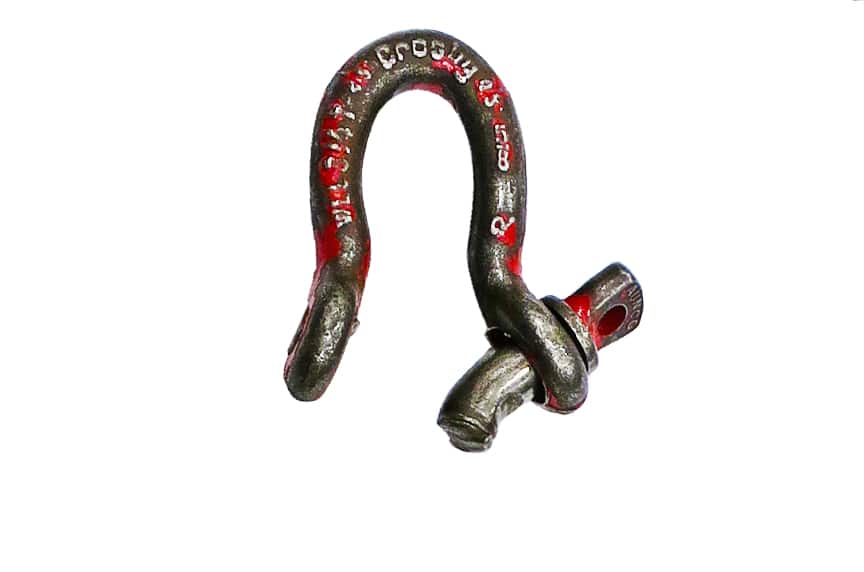
Why should this device be removed from service?
From the photo, it’s difficult to tell whether this is a screw pin, round pin, or bolt type shackle due to excessive damage.
The damage to this shackle is obvious, the pin is cracked, bent, and no longer extends from ear to ear. This damage was likely caused by excessively overloading the shackle to the point of breaking.
Relevant Standard(s):
ASME B30.26 – Rigging Hardware
Section of Alloy Chain Sling
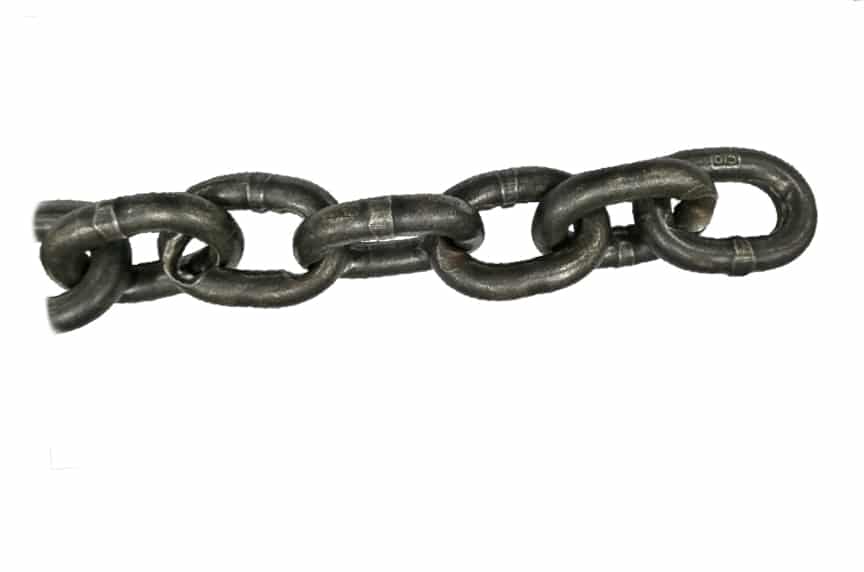
Why should this device be removed from service?
When you look closely at this section of an alloy chain sling, you can see that there are deep gouges in several links. This damage was likely caused from misuse and abuse to the sling and warrants removal from service.
Relevant Standard(s):
Homemade Web Sling and Lifting Clamp Device
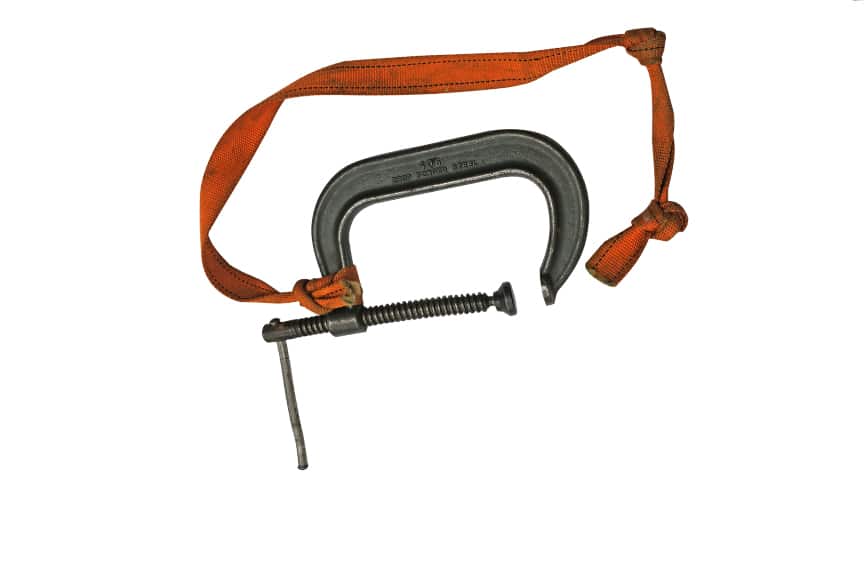
Why should this device be removed from service?
Neither the sling nor the clamp are safe for overhead lifting applications. The knots present in the sling warrant removal from service. Not only is it non-compliant to place knots in a lifting sling, but knots are used to connect the clamp to the sling, instead of an approved mechanical or welded connecting device. The sling also appears to have suffered severe cuts and abrasions, as the eyes are no longer present on each end.
While the clamp does not appear to show any excessive damage and shows clear manufacturer markings, it is not rating for lifting. This type of C-clamp is meant for pressure applications only.
Relevant Standard(s):
ASME B30.20 – Below-the-Hook Lifting Devices
ASME BTH-1 – Design of Below-the-Hook Lifting Devices
Wire Rope Segment
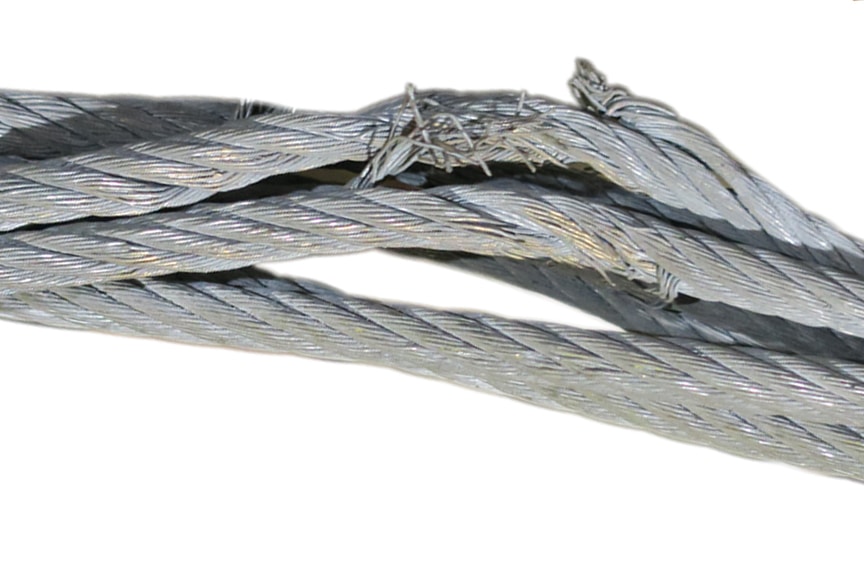
Why should this device be removed from service?
This image shows a portion of a wire rope sling that displays kinking and broken wires—both of which are criteria that warrant removal from service.
Although a certain ratio of broken wires are permitted, the kink damage alone meets removal from service criteria for a wire rope sling.
Relevant Standard(s):
Wrapping It Up
We hope that this article gives you insight into common removal from service criteria and helps identify what unsafe rigging equipment looks like. Identifying and removing unsafe lifting and rigging equipment is critical to maintaining a safe work environment and avoiding accidents and costly fines.
To identify and remove unsafe devices, it’s important to regularly assess your equipment according to OSHA and ASME standards. If you don’t have the resources to adequately and confidently inspect your lifting and rigging gear, you may want to reach out to a third-party inspection company to do it for you.
At Mazzella, we perform certified rigging inspections and can provide lifting and rigging training for your employees. We will come on-site and observe your lifting practices, review your documentation and training records, and assess the equipment that you use to make overhead lifts.
If you’re interested in learning more about our rigging inspection program and how we can help keep you in compliance with OSHA and ASME standards, contact us today to schedule a consultation. Furthermore, download our Lifting Sling Types & Terms E-book for more best practice tips.
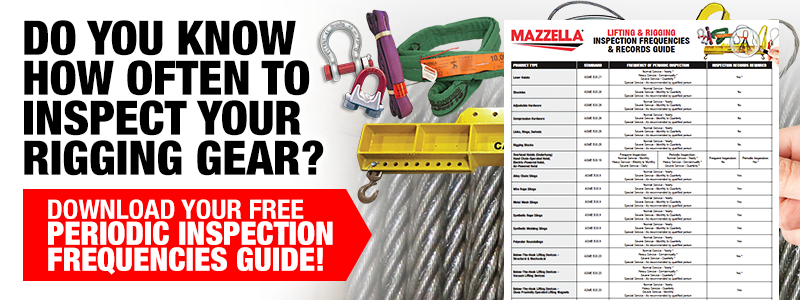
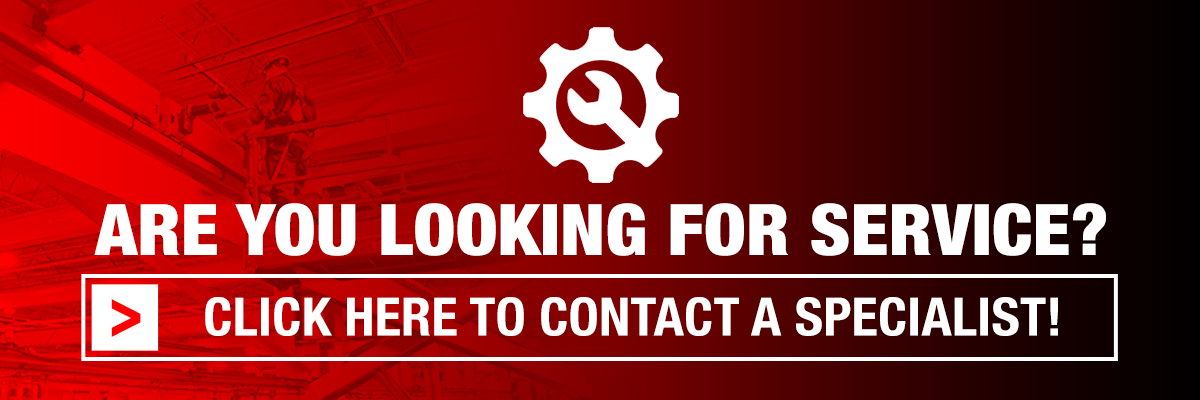
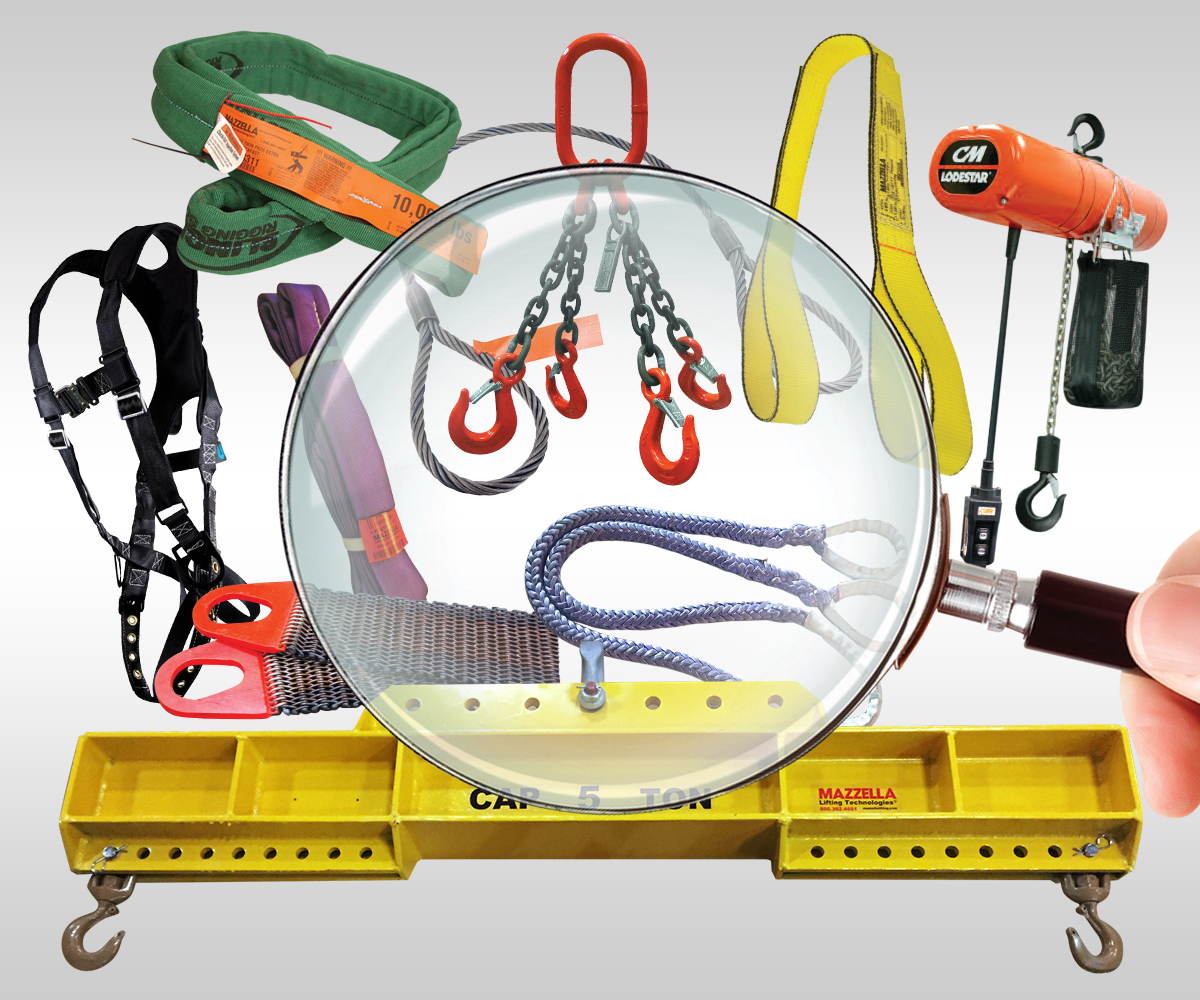
Rigging Inspection Services
OSHA 1910.184, ASME B30.9, B30.20, B30.26, & ANSI Z359 require periodic, documented inspections on slings, rigging hardware, lifting devices, and fall protection every 12 months, at minimum, and monthly to quarterly in more severe service conditions.
Call us at 800.362.4601 or click here if you need inspections for slings, rigging hardware, lifting devices, or fall protection!
Copyright 2020. Mazzella Companies.

